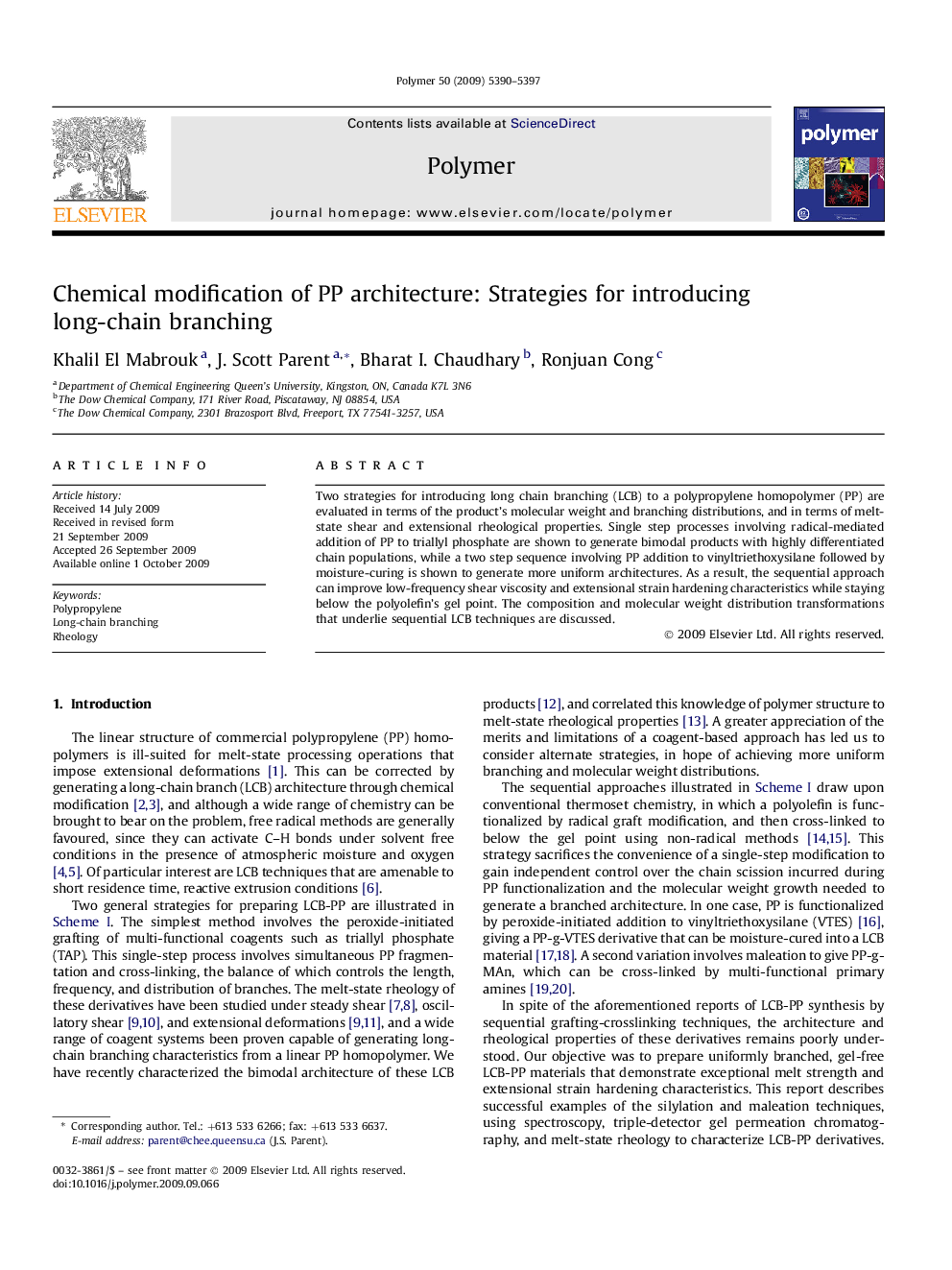| Article ID | Journal | Published Year | Pages | File Type |
|---|---|---|---|---|
| 5185720 | Polymer | 2009 | 8 Pages |
Two strategies for introducing long chain branching (LCB) to a polypropylene homopolymer (PP) are evaluated in terms of the product's molecular weight and branching distributions, and in terms of melt-state shear and extensional rheological properties. Single step processes involving radical-mediated addition of PP to triallyl phosphate are shown to generate bimodal products with highly differentiated chain populations, while a two step sequence involving PP addition to vinyltriethoxysilane followed by moisture-curing is shown to generate more uniform architectures. As a result, the sequential approach can improve low-frequency shear viscosity and extensional strain hardening characteristics while staying below the polyolefin's gel point. The composition and molecular weight distribution transformations that underlie sequential LCB techniques are discussed.
Graphical abstractDownload full-size image
